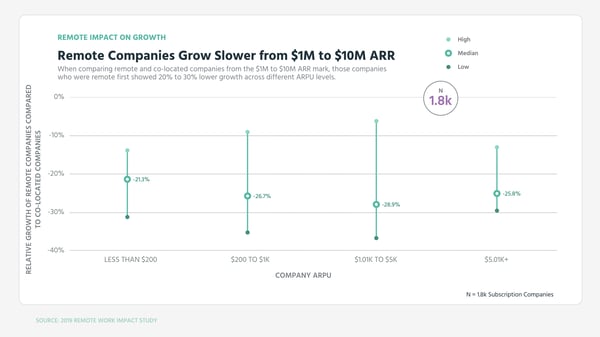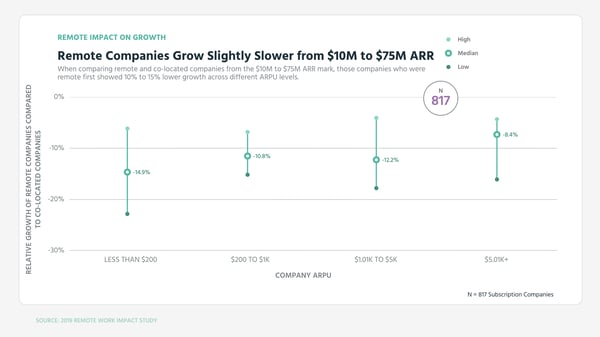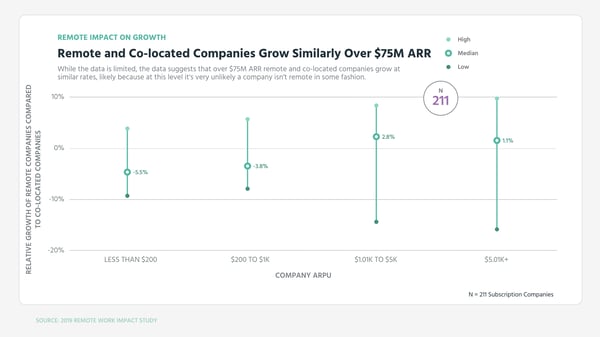*****We will only be posting a few of these episodes on the blog, which means if you want to make sure you don't miss an episode of this series you must subscribe separately below****
In the early stages, remote companies are growing at a much slower rate than those companies where everyone is co-located.
You’re seeing here a blend of a lot of different types of companies that are doing anywhere from $1M to $10M in annual revenue. Note that no matter the ARPU, which is charitable proxy for different types of teams, remote teams have growth rates that are roughly 20 to 30% lower than co-located teams.
Click to enlarge
What’s fascinating though is that as companies get larger, this growth differential starts to diminish.
When we look at a similar split of companies, but now looking at those doing $10M to $75M, you’ll note that the difference has essentially halved to remote teams growing 10 to 15% percent less than co-located teams.
Click to enlarge
You’re obviously seeing some survivor bias with this data, but when you think about it, this trend stands to reason. By $10M you probably have figured out your main channels and definitely product/market fit, so remote is less of an issue.
That’s not to say that figuring out product market fit and your channels requires you to be in the same room with one another, but it’s likely easier.
When we look at companies doing more than $75M, this growth differential essentially disappears, although the data is fairly sparse.
Click to enlarge
That being said, most companies when you get to this level have evolved to a point where they’re remote anyways with multiple offices, a contingent of folks who work from home, and obviously a high volume of different types of team members.
On the other hand, we do also see companies bring people back to the mothership when times get tough - like Yahoo and Reddit - to name a couple.
So should we say screw remote teams? Not exactly. There are a few big pieces to keep in mind here. For one, as stated previously all companies go remote or multi-office at some point, so it’s not an argument of either/or, it’s more of an argument of when.
Further, a lot more research needs to be done here, because the big question is why we’re seeing this data. Is it because co-located teams handle ambiguity better? Is it because of a technological connection problem that will diminish over time making the trend reverse?
There are just a lot of unanswered questions here.
Well, that's all for now. If you have a question, ship me an email or video to neel@profitwell.com and if you got value here or on any other week of the report, we appreciate any and all shares on Twitter and LinkedIn. That’s how we measure if we should keeping doing this or not. We’ll see you next week.
 We just launched engagement data!
We just launched engagement data!






